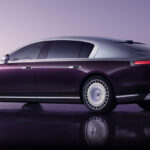Are BMWs Getting Sportier, or Am I Just Getting Older?
As a road tester accelerating into middle age, I can’t help but wonder if mainstream BMWs are truly getting sportier, or if it’s just my perspective that’s changing. This thought crossed my mind recently as I had the opportunity to drive the fourth-generation BMW X3.
The BMW X3 has undergone a significant transformation, in line with the company’s focus on electric car platforms and keeping combustion-engined models competitive. While the technical updates may not be groundbreaking, with the plug-in hybrid version offering more electric range and the M Performance version boasting increased power, the car’s exterior styling, infotainment tech, and cabin design have received a refresh.
However, what stood out to me was the difference in how the X3 now rides and handles. The suspension feels noticeably firmer compared to its predecessor, offering a more dynamic driving experience. While the mechanical refinement and isolation of the 20 xDrive M Sport 2.0-litre petrol variant were impressive, the overall ride quality felt firm and unyielding, lacking the supple flow over uneven surfaces.
A similar impression was noted when driving the BMW iX2 earlier this year, raising concerns about its suitability for family use as a modern SUV. With increased competition in the mid-sized, premium-branded SUV segment, BMW may be taking risks in its quest to stand out from the crowd and reclaim market share.
Ultimately, while the latest BMW models may offer enhanced performance and modern features, the trade-off in ride comfort and handling characteristics is a point of consideration for potential buyers. As BMW continues to evolve its lineup, striking a balance between sporty dynamics and everyday usability will be key in maintaining its position in the competitive automotive market.






